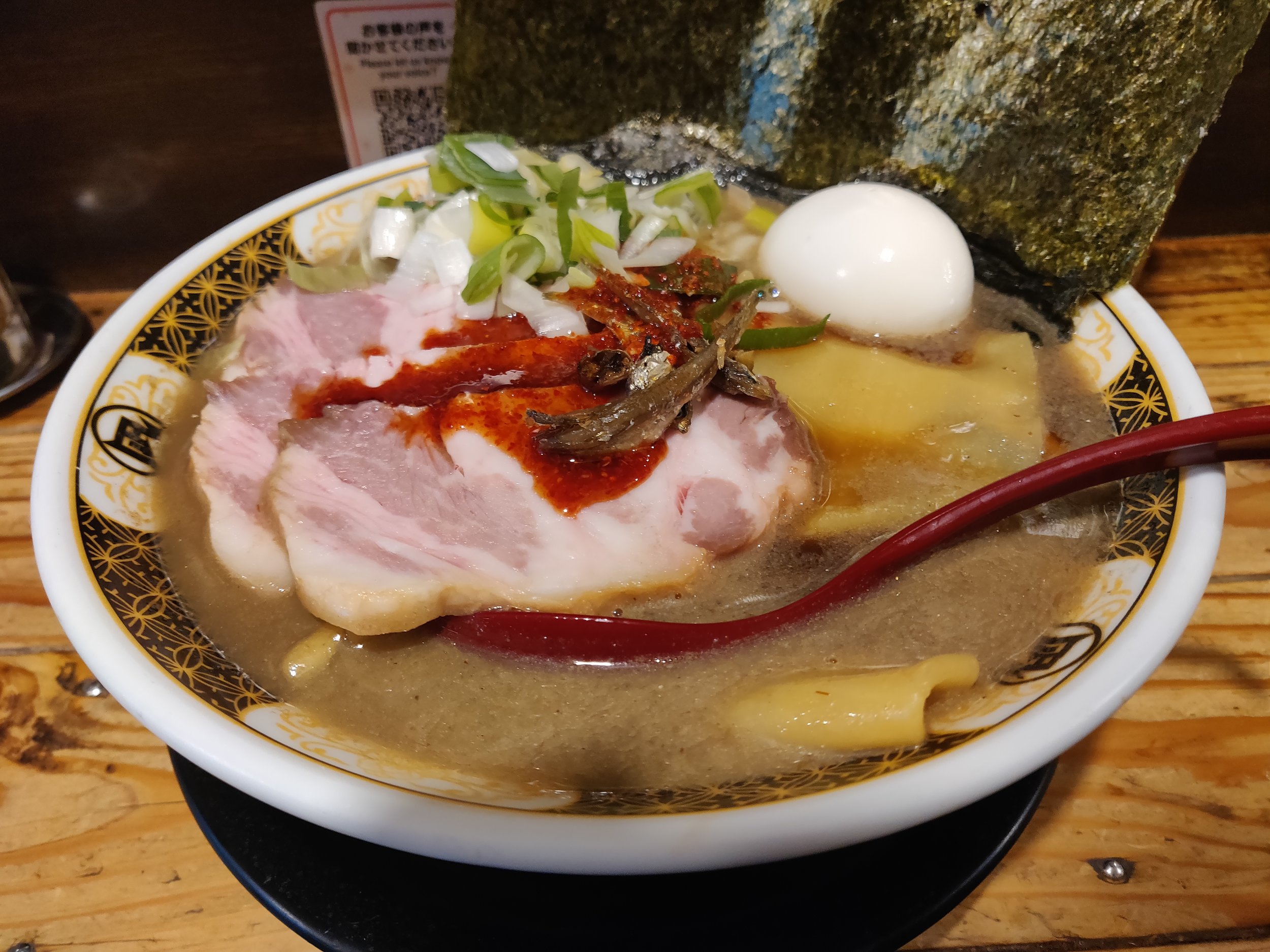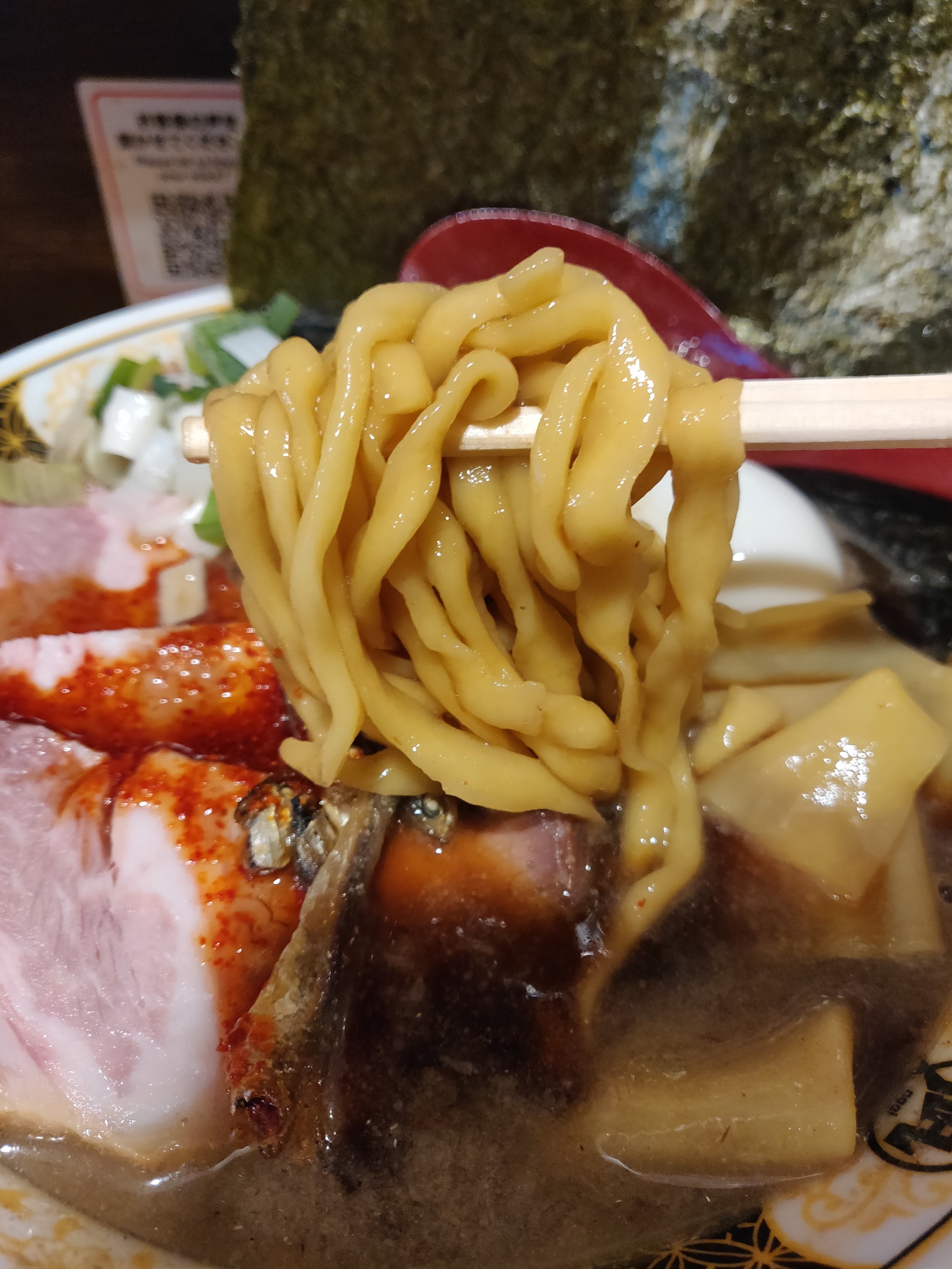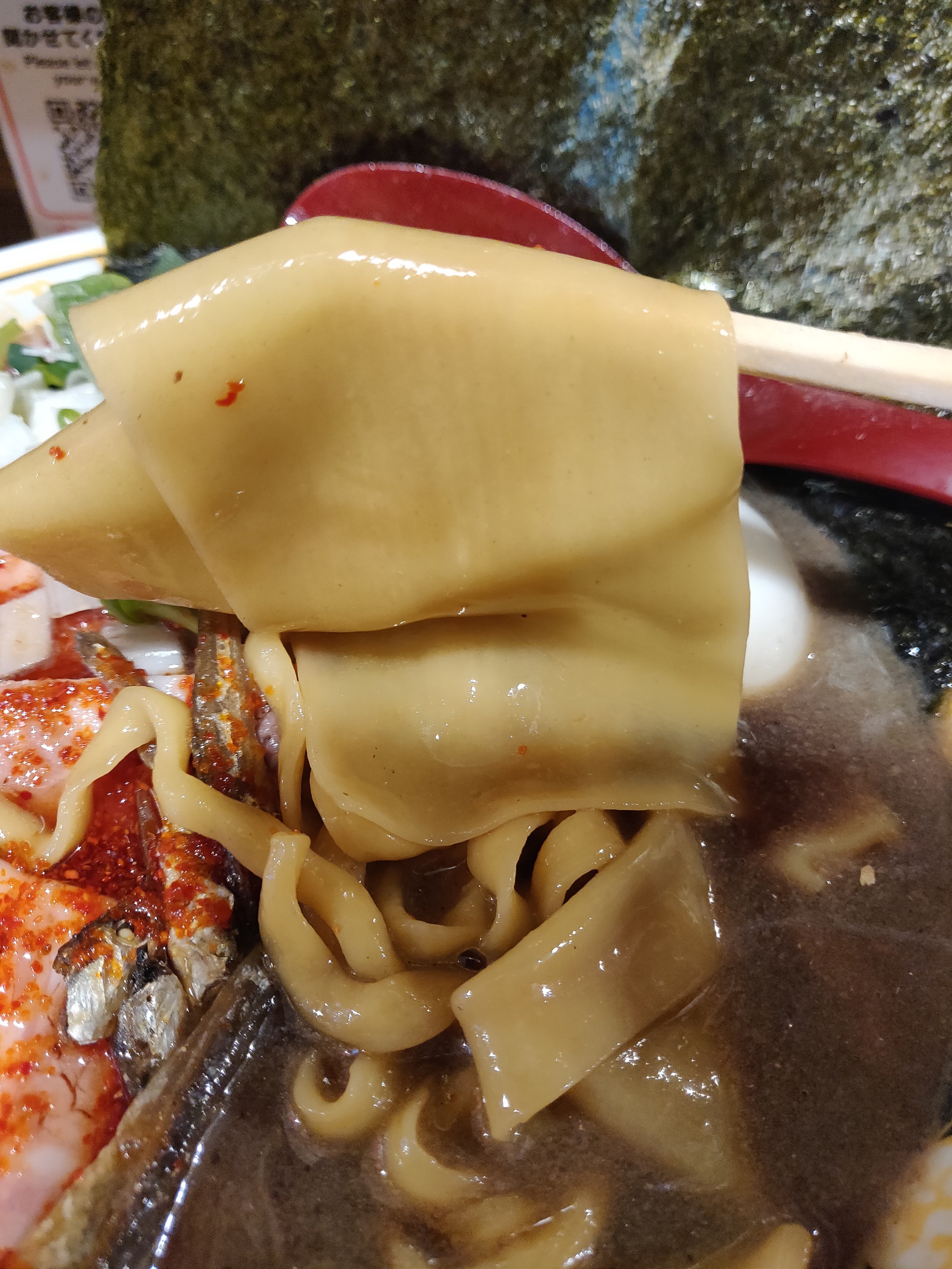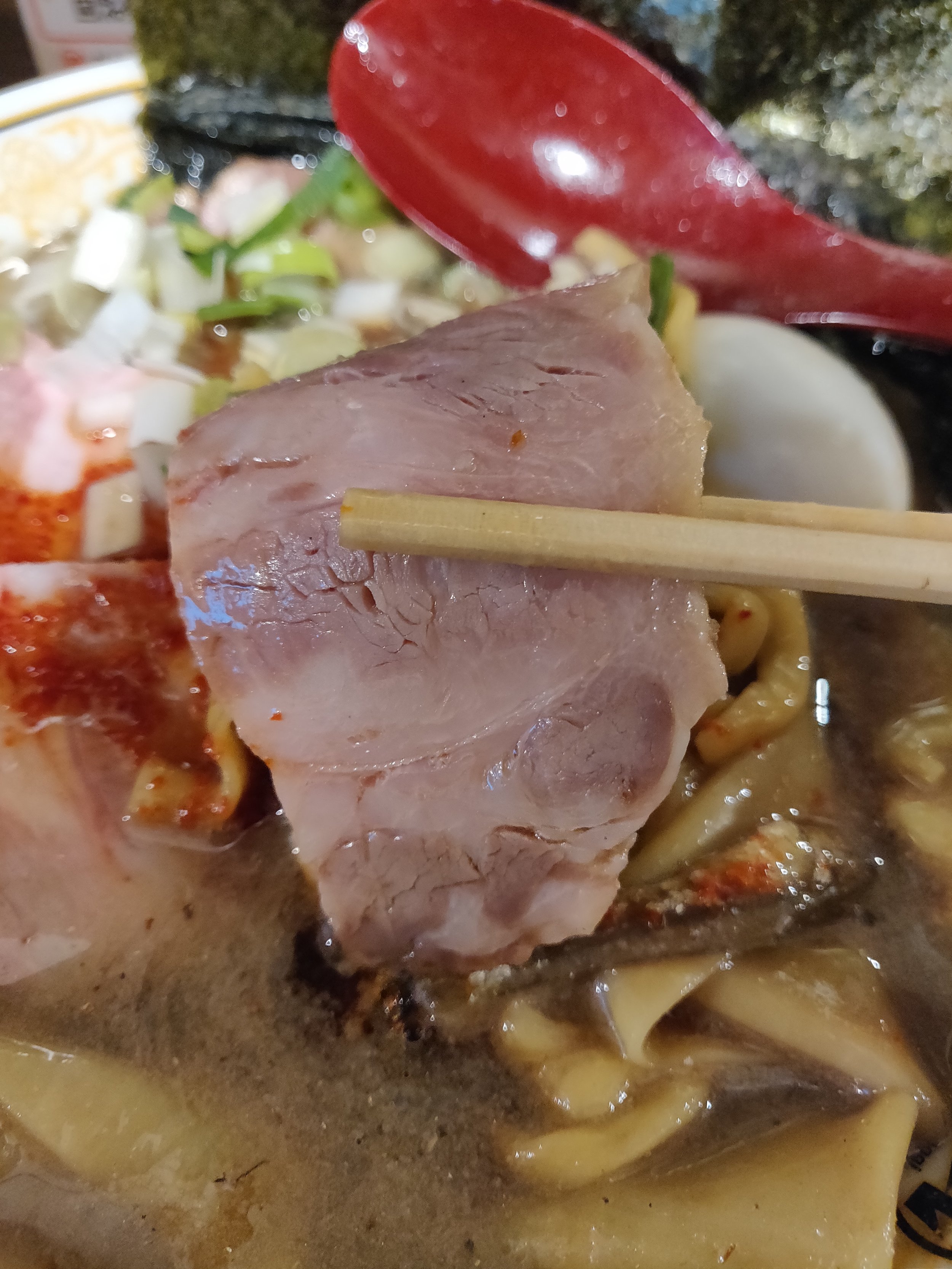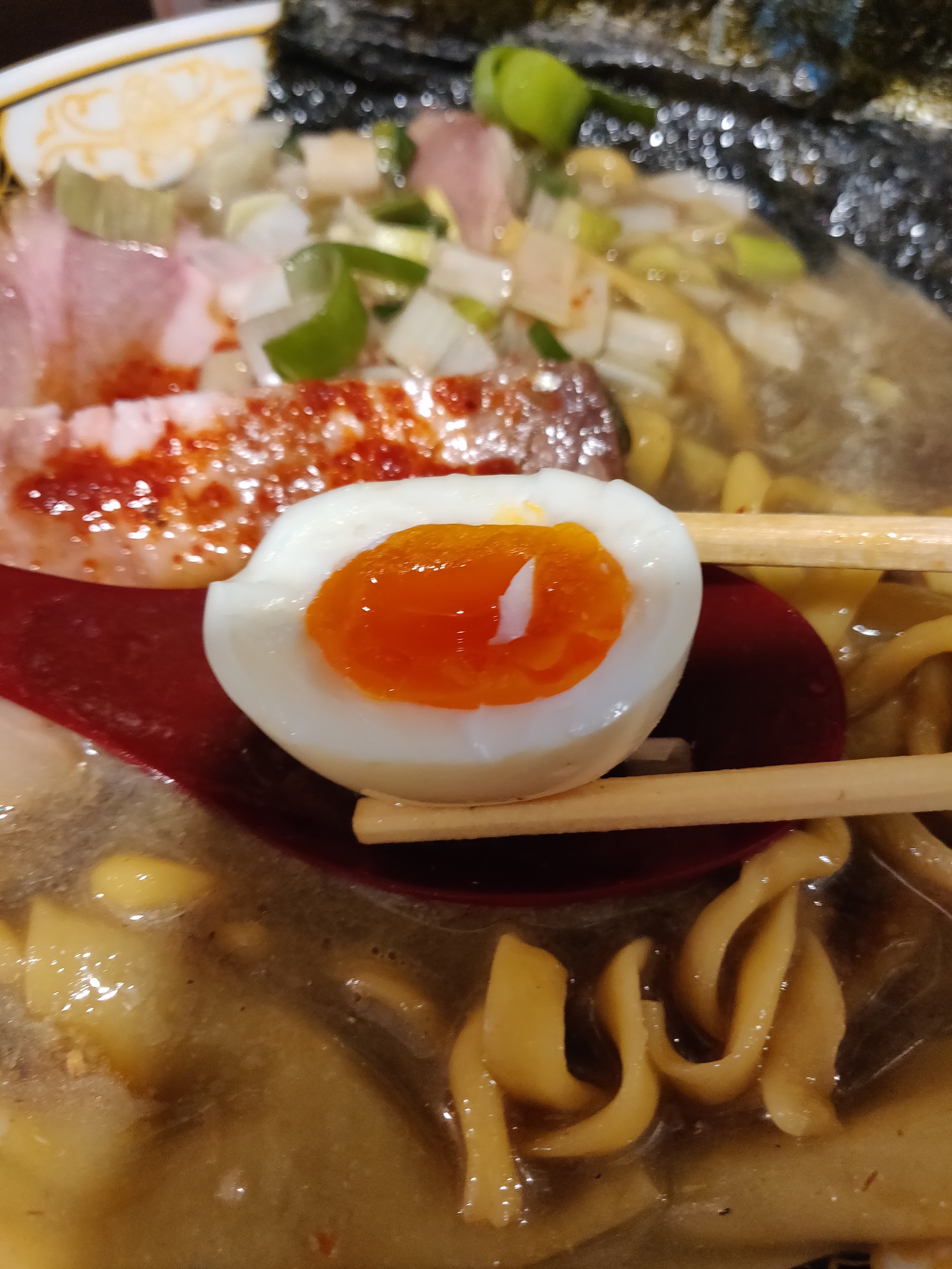Sugoi Niboshi Ramen Nagi (すごい煮干ラーメン凪 新宿ゴールデン街店本館); Quintessential Late Night Golden Gai Ramen, Shinjuku
One of the most famous drinking districts in Tokyo is located off a beaten path in Shinjuku, where a long alley filled with small bars seating anywhere from 5-10 people per shop, attract Japanese salarymen after a long day of work. Golden gai has been incredibly popular among drunk Japanese salarymen for decades, but has recently seen a resurgence as a tourist hub, with many of these bars catering to foreign clientele. The bars here will have small food platters, but are primarily drinking spots and many patrons will find themselves crawling out of these bars in search of a place to eat after a long night drinking. Luckily, a ramen shop, tucked away on the second floor of one of these aforementioned bars, fulfills the hunger of these drunk customers at all hours of the day. Open 24 hours a day, 365 days a week, Ramen Nagi will fill your noodle needs whether it be before you grab your evening drinks, or at 5 am waiting for your first train to arrive.
A classic Japanese Ramen sign adorns the outside and you’ll sometimes find a line wrapping around the back alley to the side of the restaurant during peak hours. However the line isn’t too long and luckily the only decision people need to make when ordering if the amount of toppings, noodles, and whether or not they want to keep the drinking going or not. As you can see from the ticket machine, its written in Japanese, but they do have English menus so don’t be afraid to ask for them when its your turn to purchase your tickets. If however you would like to see what the menu is like ahead of time, I’ll translate them here below. Starting with the two big buttons on top are the Tokusei and Super Golden Ramen. The tokusei comes with four slices of their pork char siu instead of the two and also comes adorned with their half boiled egg. The Super Golden Ramen comes with a different char siu variety in addition to the ones which come with the Tokusei. If you’re fine with just a regular ramen, that button is on the second row, first from the left, and one with the soft boiled egg is right next to it. For the health conscious, they offer an item called the Base Ramen which uses special noodles and has less toppings which will amount to 50% less carbs and 30% less calories than their regular ramen. The row below that is the 100 yen toppings (your choice of char siu, green onions, and dried seaweed), their seasoned soft boiled egg for 110 yen, and a set rice bowl for a Japanese Ochazuke, or porridge, that you can make with your leftover soup. Second row from the bottom are tea, coca-cola, Coedo beer, and Japanese Sake. The final row is Japanese beer and dried niboshi as appetizers to have with your beer. Once you have your tickets purchased, hand them over to the staff as they seat you and sit tight for your ramen.
So I ended up getting the regular ramen with soft boiled egg and I was actually quite surprised with both the quality and volume of the ramen. The amount of food for even the regular ramen was nothing to scoff at and it was extremely filling. However, what brought me here was the soup, as my long time followers will know that I have an unhealthy obsession with thick, niboshi ramen. However, I’m usually more drawn towards the thicker, cement mixer variety of Niboshi such as the ones served at Hiwamatanoboru or Ibuki, so I wasn’t particularly excited with the ramen here. I was caught off guard though with how incredibly delicious and umami filled the soup was though. While it may not have the gritty punch that Ibuki and Hiwamatanoboru has, it definitely makes up for it with the inordinate amount of niboshi they use to make their broth. It’s evident just with one spoonful of their soup. Rather than either blending the niboshi back in to the soup, or simmering it on high heat until the niboshi essentially disintegrates in to the broth, Nagi does a slow, but long simmer so that it extracts as much of its flavors as possible. There is still a fair amount of Gyofun, or fish powder, in the soup, so there is a bit of grittiness in the soup, but not nearly as much as the cement mixer variety. The pork bone broth blends very well with the Niboshi broth and adds a great fatty flavor profile, which is typically lacking at the more thicker soup shops, so that was definitely a nice benefit to Nagi’s approach. In the end, it does come down to preference, and while this was amazingly delicious, I think I still prefer the creamy, thick soup over at Ibuki more.
While the soup is a huge factor in how delicious the ramen is at Nagi, on pure aesthetics and creativity, the noodles and toppings are definitely what draws the crowds. First off, the two noodle varieties is just genius. The thinner, chewy noodles act as the perfect texture balance to the thin soup, and it helps build the different flavors in your mouth as it clings in different ways throughout the noodle. The noodle itself has a nice, nutty flavor, with some great alkalinity and bread flour used to get these results. The wide, thin noodles have a floppy won ton-esque texture and flavor and acts almost like a second spoon in helping coat your entire tongue with the soup with every bite. Pork char siu is cooked pretty well done actually and doesn’t have any residual pinkness that’s popular nowadays, especially with niboshi ramen types. Since the thicker versions don’t blend well with a deep pork broth, a lot of places have been making their pork char siu via a sous vide method, hence the pink hue. The color and texture of their pork char siu hints that they simmer them in the soup at a certain point in its preparation. My favorite was the egg which was not marinated in a thick soy sauce marinade, so it contrasts the heavy and full bodied soup. While it might sound a bit weird, the egg almost cleanses my palette from the rich soup. The bits of niboshi was a nice touch to remind you of what the soup base is and keeps in line with the overall theme of the restaurant. Finally the leeks and green onions do a great job in providing some much needed freshness and crunch to the bowl.
Overall I came away incredibly impressed with the ramen at Nagi. What’s not to love here? The soup is phenomenal and has the perfect balance of bitterness, umami, and savoriness that makes it super addicting. Noodles have a ying and yang of harmony and chaos with the two styles, giving multiple levels of flavor changes to the bowl. Toppings are prepared to perfection and compliment rather than distract from the ramen. And finally, did I mention its open 24 hours a day?! You can get this whenever you please and that’s just the cherry on top of an already perfect bowl. If you’re on the hunt for some great midnight ramen, be sure to check out Nagi. I’m confident you won’t leave disappointed.


